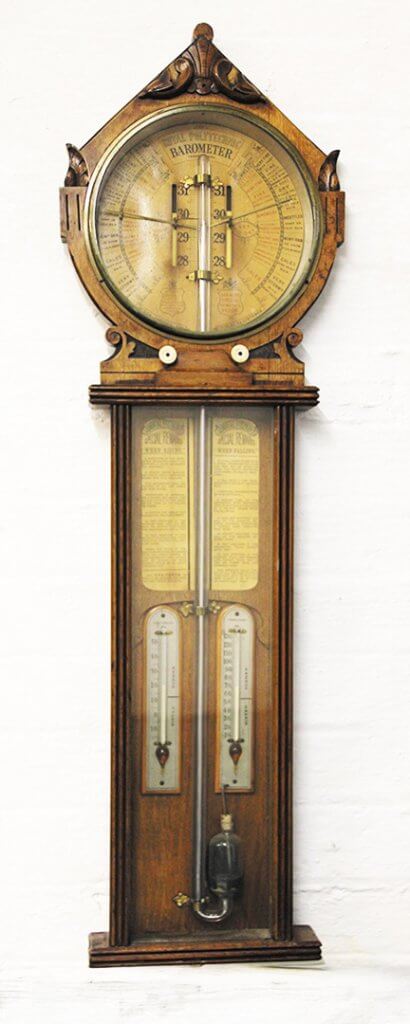By Vivienne Milburn FRICS Independent Antiques Auctioneer & Valuer
PREDICTING what lies ahead in the year to come is a difficult job; predicting the weather, however, is easier since Admiral FitzRoy and his barometers. We can be grateful for modern technology and our ability to be able to predict the weather. In earlier centuries, the most you could expect was the reading on the barometer to predict flood or drought.
It was in the 1860s that a famous English sea captain, Admiral FitzRoy, (the former Captain of Darwin’s exploration ship, the Beagle), provided a detailed weather forecasting script that he attached to his barometer inventions.

As a result, FitzRoy is credited with the beginning of the first published weather forecasting in the world. FitzRoy barometers turn up regularly at auction and rare examples will make over £1,000; the one featured here made £220 when sold recently in a specialist auction; and it came from a property in Bakewell. The amount seems disproportionate to the enormity of Admiral FitzRoy’s developments.
In 1854, FitzRoy was appointed as chief of a new department to deal with the collection of weather data at sea. His title was Meteorological Statist to the Board of Trade. This was the forerunner of the modern Meteorological Office. He arranged for captains of ships to provide information, and for computation of the data collected.
FitzRoy soon began to work on strategies to make weather information more widely available for the safety of shipping and fishermen. The invention of several different types of barometers was attributed to him. These became popular and continued in production into the 20th century, characteristically engraved with Admiral FitzRoy’s special remarks on interpretation, such as: ‘When rising: In winter the rise of the barometer presages frost.’
A storm in 1859 that caused the loss of the Royal Charter ship inspired FitzRoy to develop charts to allow predictions to be made in which he coined the term ‘weather forecast’. The first daily weather forecasts were published in The Times in 1861.
In 1860, FitzRoy introduced a system of hoisting storm warning cones at the principal ports when a gale was expected. He ordered fleets to stay in port under these conditions. Queen Victoria once sent messengers to FitzRoy’s home requesting a weather forecast for a crossing she was about to make to the Isle of Wight.
Editor’s Note: Perhaps you have antiques and collectables that might be valuable? If so, it is worth getting the advice of an Independent Antiques Valuer to assess them. For further information, please contact Vivienne Milburn on 07870 238788 or go to www.viviennemilburn.co.uk or email vivienne@viviennemilburn.co.uk






